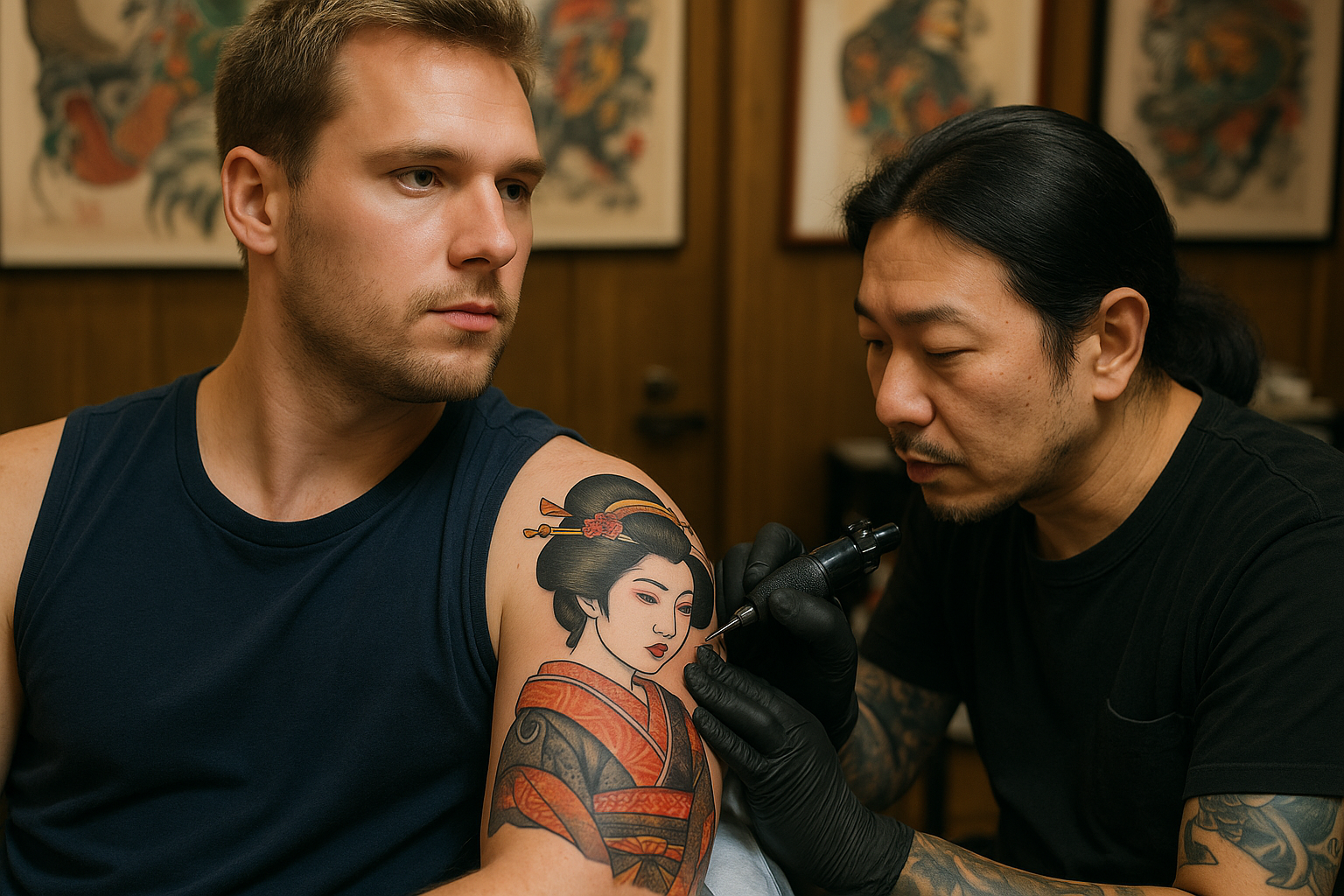Geisha tattoos are among the most captivating and misunderstood icons in Japanese tattoo art. Their graceful poses, layered symbolism, and ties to cultural elegance draw in collectors from all over the world. But one question keeps coming up:
Can foreigners get geisha tattoos without being disrespectful?
The answer isn’t black and white. It depends on intention, education, and execution. In this post, we explore what respected tattoo artists—Japanese and international—say about foreigners wearing geisha tattoos, and how to approach it with integrity.
The Short Answer: Yes, But…
Most traditional and modern irezumi artists agree:
Yes, foreigners can get geisha tattoos—but you must do so with awareness, not appropriation.
This means taking time to understand:
- What a geisha truly is (and isn’t)
- How to avoid confusing geisha with oiran
- The cultural context of Japanese tattooing (irezumi)
- The difference between homage and exoticism
What Tattoo Artists Say
Horikiku (Japan):
“Geisha is not cosplay. If a foreigner respects the form and story, then the tattoo becomes shared reverence, not theft.”
Mutsuo (Three Tides Tattoo, Osaka):
“Irezumi has always evolved. Foreigners who study Japanese symbolism with heart and respect bring new life to the tradition.”
Chris Garver (U.S.):
“The best geisha tattoos I’ve done were for clients who didn’t just want a pretty woman — they wanted to understand what she represented.”
Junii (NYC):
“Problems arise when people treat geisha like a sticker. It’s not about permission — it’s about posture and purpose.”
What Makes It Cultural Appreciation (Not Appropriation)?
To avoid cultural appropriation when getting a geisha tattoo, consider the following:
✅ Do:
- Research the role of geisha in Japanese culture and history
- Hire a tattoo artist who understands irezumi
- Learn the difference between geisha and oiran (don’t mix symbols)
- Understand the symbolism (cherry blossoms, fans, kimono, parasols, etc.)
- Be intentional: Know what the image means to you
❌ Don’t:
- Get a geisha tattoo as a “cool Asian design”
- Choose hyper-sexualized or cartoonish versions
- Disrespect the tradition by combining clashing elements (e.g., anime swords, Western text, pin-up style)
- Copy a tattoo from someone else’s body or culture without context
Tips for Foreigners Getting Geisha Tattoos
1. Consult an Artist Fluent in Japanese Style
Look for artists who specialize in Japanese work and can explain the symbolism behind design choices. Bonus if they’ve trained under or with Japanese masters.
2. Choose Meaning Over Trend
Your geisha should reflect a personal connection—not a passing trend. Ask yourself: Why her? What does she reflect in you?
3. Respect the Flow and Placement
Traditional geisha tattoos follow the body’s natural rhythm. They aren’t stickers—they’re scrolls. Let your artist guide placement.
4. Avoid Mixing Clashing Cultures
No cherry blossom geisha with Viking runes. No samurai swords with pin-up expressions. These dilute the tattoo’s integrity.
Why Many Japanese Artists Welcome Foreign Collectors
Ironically, while Japan historically stigmatized tattooing (especially irezumi), many Japanese tattoo masters today are grateful to foreign clients who keep the tradition alive.
Foreigners often:
- Come with deep respect
- Travel across the world to sit in a master’s chair
- Invest in learning about the meaning behind the art
In that sense, geisha tattoos worn by foreigners can help preserve and carry forward a cultural lineage that has long lived in shadow.
Final Thought: Ink Is Dialogue
The geisha is not a fashion statement. She is a symbol of grace earned through hardship, presence sharpened by silence, and beauty wielded as discipline.
If you’re a foreigner who resonates with that, you are not stealing her story. You are joining it.
Just be sure you know what you’re wearing.


Leave a comment
Your email address will not be published. Required fields are marked *
You must be logged in to post a comment.